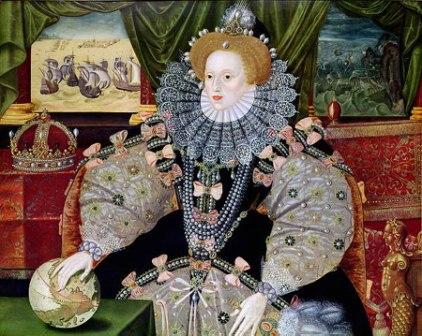Queen Elizabeth prided herself on being accessible to all of her subjects; her practice of walking amongst throngs of people when she exited and entered buildings, often stopping to speak with them, was something that made her Councillors fear for her, and they often told her so. On Elizabeth's progresses throughout her realm, which we know she very much enjoyed, she would always stop and speak with villagers and tradesmen, without a retinue of guards to protect her. Like her mother Queen Anne Boleyn had done so many years before, Good Queen Bess would distribute coins in exchange for poesy's of meadow flowers from village children (Denny).
 |
| An Elizabethan Maundy, a miniature by female court painter Leevina Teerlinc depicting Queen Elizabeth I meeting with her subjects. Image public domain. |
Queen Elizabeth used her image (clothes, appearance of perpetual youth due to heavy makeup) and the good faith she demonstrated with her people to build nationalism and loyalty to the crown. This "Cult of Gloriana" made Elizabeth semi-divine, and thus her people invincible.
 |
| A painting of Queen Elizabeth en route to the wedding of Lady Anne Russell, c.1600. Picture acquired through Wikimedia Commons. Image public domain. |

